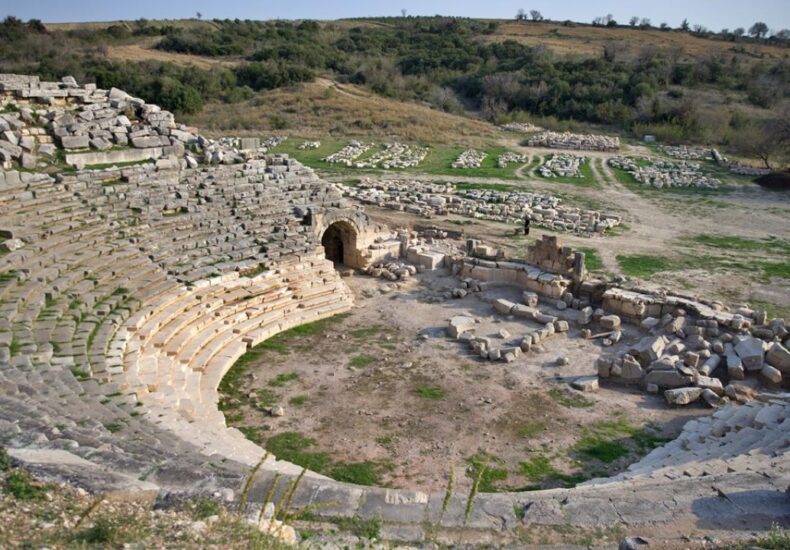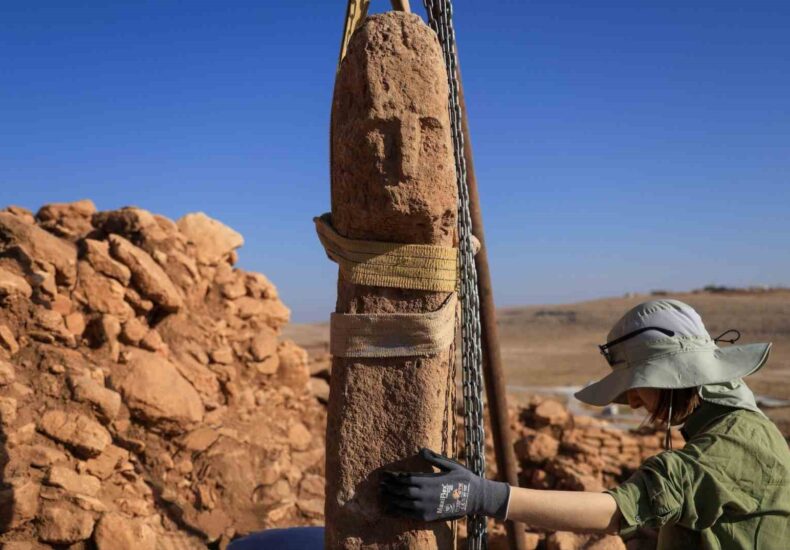
A Rare Find at Kastabala: Philosopher Mask Appears Where It Normally Shouldn’t
In the heart of southern Türkiye, a quiet corner of the ancient city of Kastabala has produced a discovery that breaks with what archaeologists normally expect from Roman stage buildings. A newly uncovered stone mask—depicting an elderly thinker with sharply modelled features—has emerged from the theatre’s façade. And according to the excavation team, philosopher masks

After 43 Years of Searching, the Long-Lost Zeus Temple Emerges at Limyra
Archaeologists working at Limyra in Türkiye’s Antalya province have finally located the long-missing Temple of Zeus — a sanctuary known from epigraphic sources since 1982 but never identified on the ground. The discovery, made in cooperation with the Austrian Archaeological Institute, is poised to reshape long-held interpretations of the ancient city’s sacred topography. A Lycian

A Historic First at Karahantepe: Human-Faced T-Shaped Pillar Unearthed in Türkiye
Archaeologists have uncovered a T-shaped pillar carved with a human face at the Neolithic site of Karahantepe in southeastern Türkiye — a discovery described as a first in human history. The finding was announced by Minister of Culture and Tourism Mehmet Nuri Ersoy on his official X (Twitter) account, where he wrote: “Karahantepe — A

